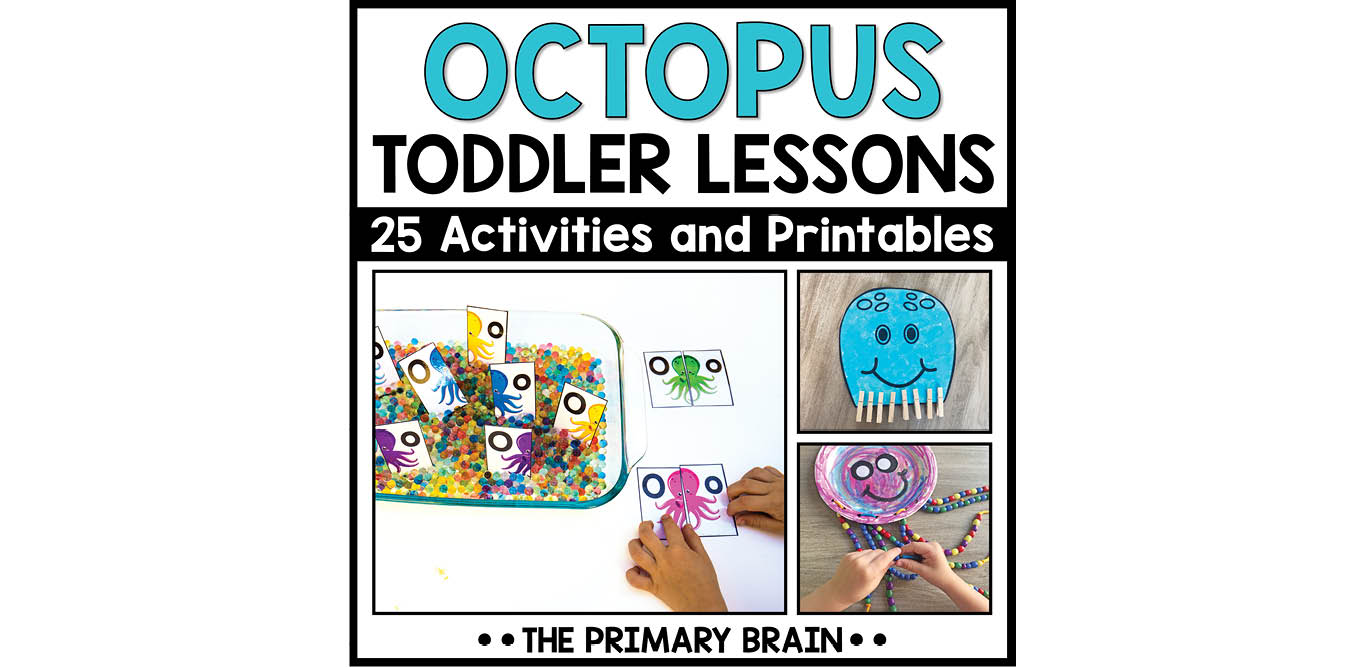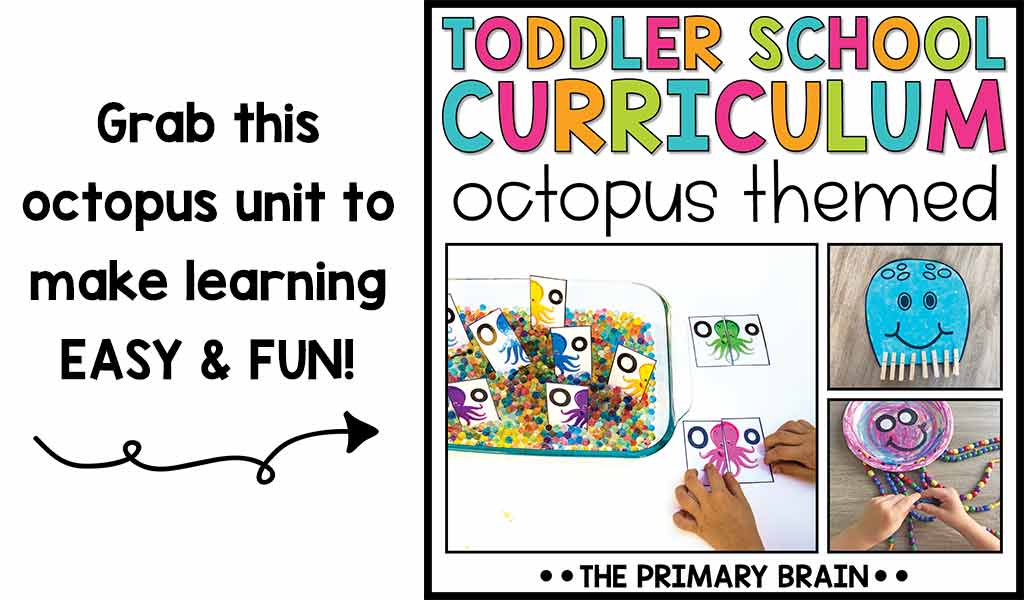Octopus Themed Toddler School Lessons
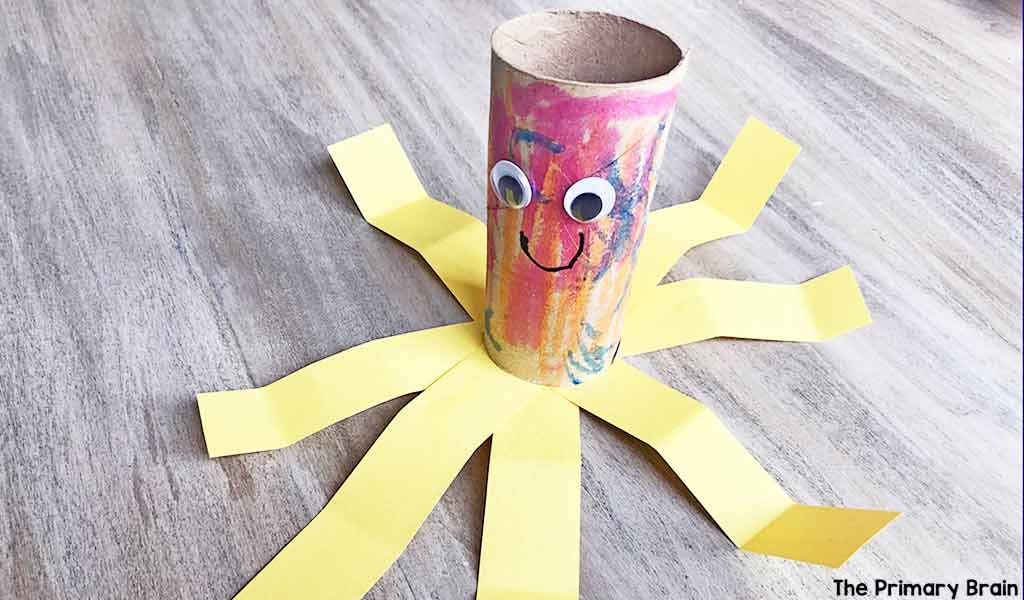
This week we are grabbing our swim gear and taking a dive down under the sea! This Octopus Themed Toddler Unit will have your little ones squealing with joy as you learn all about this animal that is sure to be your child’s newest favorite. It’s the perfect combination of fun and learning, and a great way to introduce your little ones to the letter Oo!
If you want to learn more about how to get started planning activities for your little ones, download my FREE guide for everything you need to know about the skill areas we incorporate into toddler school:
Noodle Toddler Lessons
This unit is made up of 5 detailed lessons that will work on the following activities:
- literacy/language
- sensory bin
- math and science activities
- fine motor activities
- gross motor activities
- art activities
Interested in downloading these octopus activities that you can print and use right away? Click on the image or button below to check them out in my TpT shop!
Art Activities
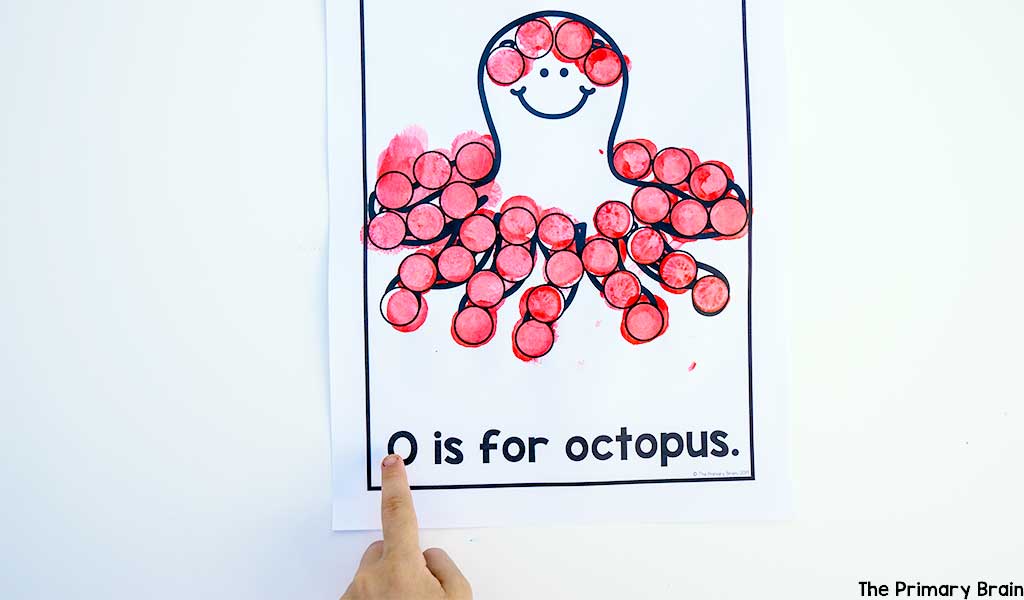
This unit includes several art activities that I know your littles will adore. You’ll be surrounded by adorable octopuses by the time the unit is over! To introduce the letter O, your child will have the opportunity to create his or her own octopus. Not only is this FUN, but it is an excellent way to work on fine motor skills as you create a beautiful piece of art using dot markers.

Another fun octopus art activity is the paper tube octopus. Your child will create an octopus using an empty toilet paper roll and eight strips of construction paper that are cut into strips. You can let your child decorate the empty toilet paper roll using paint or markers. We added googly eyes for a fun touch, and then glued the “octopus arms” to the base of the toilet paper tube. Your child can use his or her little fingers to curl and bend the paper to create fun arms. When you finish, string these up on a line and display them for all to see!
Fine Motor Activities
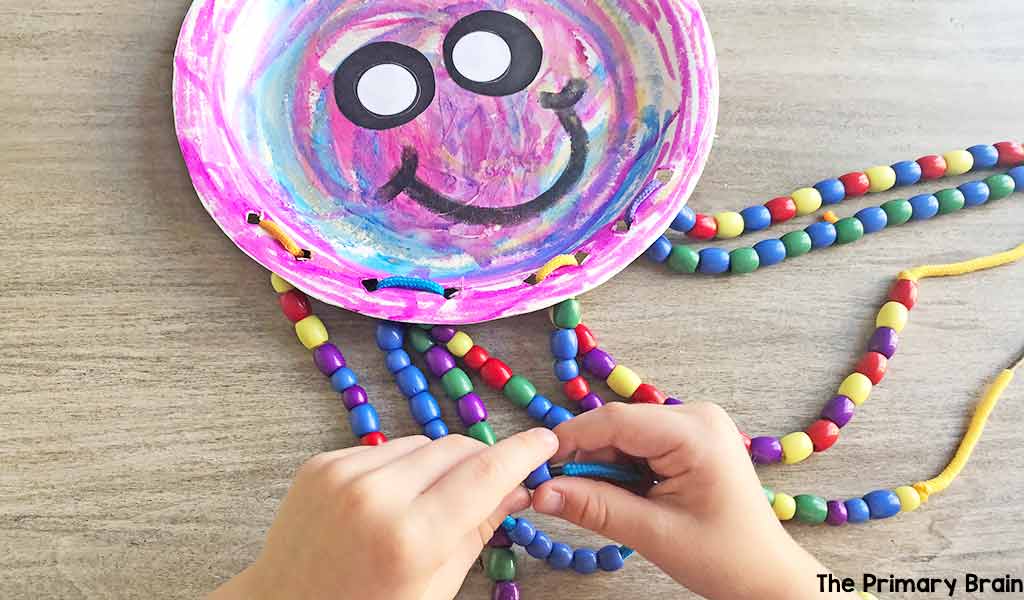
Practicing fine motor skills everyday is so important for developing finger control and learning how to manipulate different objects…but it can be tough work! To begin, your little one will color or paint a paper plate that is in the shape of a letter O. Then, you will glue construction paper “eyes” on it to make it come to life. This is a perfect opportunity to work hard on coloring in the lines, expressing their creativity, and proper crayon grip.
After their art dries, you will guide your child in using a hole puncher to punch holes in the bottom of the octopus. This fine motor practice will really help to build up those strong hand and finger muscles! If your child is ready, they can do this independently, or you can do hand-over-hand movements. Then, add some string to the holes, and you can start stringing beads onto the octopus. Using larger beads is helpful as our little ones develop finger control. You can give your child complete creative control over how they string the beads, or you can work on color patterns.
You might be wondering why we spend so much time working on finger control activities… When we work on activities, such as stringing beads, we are using similar hand movements to when a child grips a large pencil. Since your child is getting used to this action early, it will help them to hold a pencil when they start coloring or writing during school!
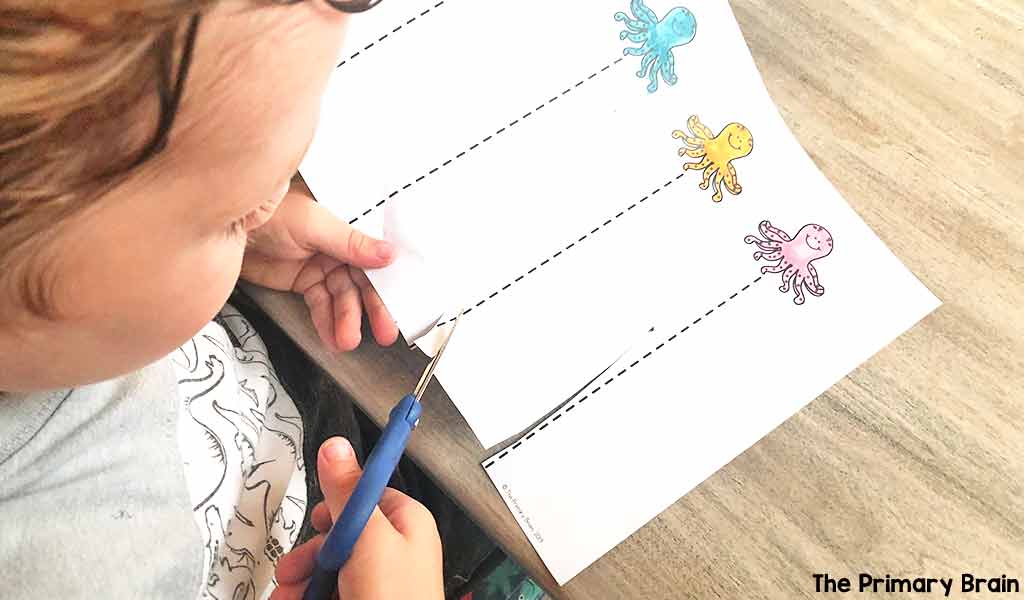
Teaching your little ones to use scissors early on will be a huge benefit for when they start school. This octopus scissor skill practice page will really help with this practice. Your child will practice holding the paper appropriately with one hand, while cutting on the dashed lines up to the octopus with the other. Cutting can be frustrating at first, especially when little ones are still learning. Be patient and assist as needed! With lots of practice and your encouragement, they’ll master cutting in no time!
Learn even more about fine motor skills here: What are Fine Motor Skills?
Sensory Bins
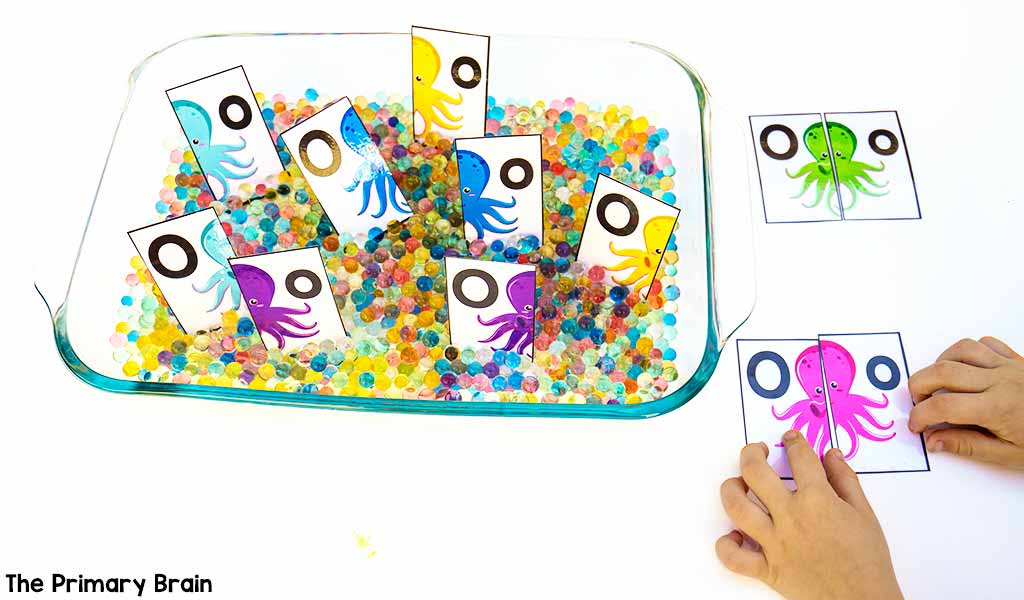
Sensory bins provide the opportunity to explore and learn through hands-on tactile play that engages a lot of our senses. Since we are going down under this week, water beads will help give the illusion that your little one is going under water! Water beads take a few hours to soak up the water, so this is an activity you will want to prepare a few hours before you plan to use it. Once the water beads are fully inflated, pour them into a large bin. Give your child time to just play, explore, scoop, and pour the beads. They are so much fun and a great way to activate the senses. When you are ready to add an academic component to the bin, you can add the laminated octopus puzzle pieces to the bin. Your child can find all of the puzzle pieces and set the completed puzzles outside the bin. Make sure to ask your child the name of each color as they create the puzzles.

Another reason I LOVE sensory bins is because they’re so versatile. All I had to do was switch out the cards for a different skill and the next lesson was completely ready. Finding ways to save time is key when you have little ones.
Since you are working on the letter O this week, your child will sort the uppercase and lowercase letters into two bowls. As they sort, take advantage of each opportunity to ask the name of the letter. By the end, I bet your child will be able to identify the “big O” and “little o” independently!
Math Activity
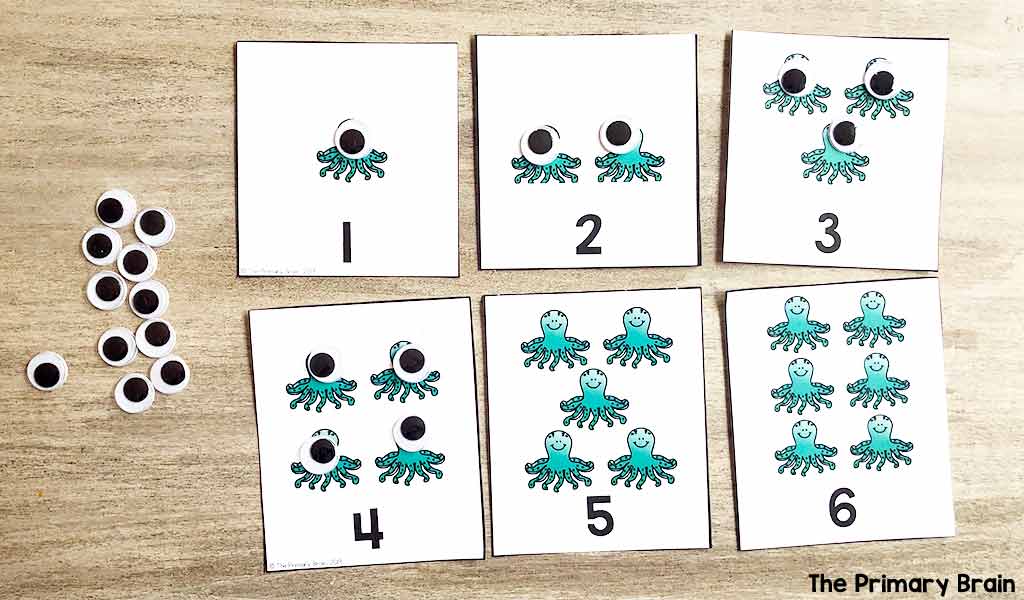
It is essential to expose little ones to counting skills through 1:1 correspondence activities early on. This will build the foundation for all of those math skills when your child enters kindergarten! This 1:1 corresponding math activity is super simple to prep! All you do is print, cut, and give your child the cards and some counters to use. We used googly eyes for this one and my son thought that was so silly and fun! Your child will place a small counter on each octopus as they count aloud. Super simple, super fun, and tons of learning (math AND fine motor) happening!
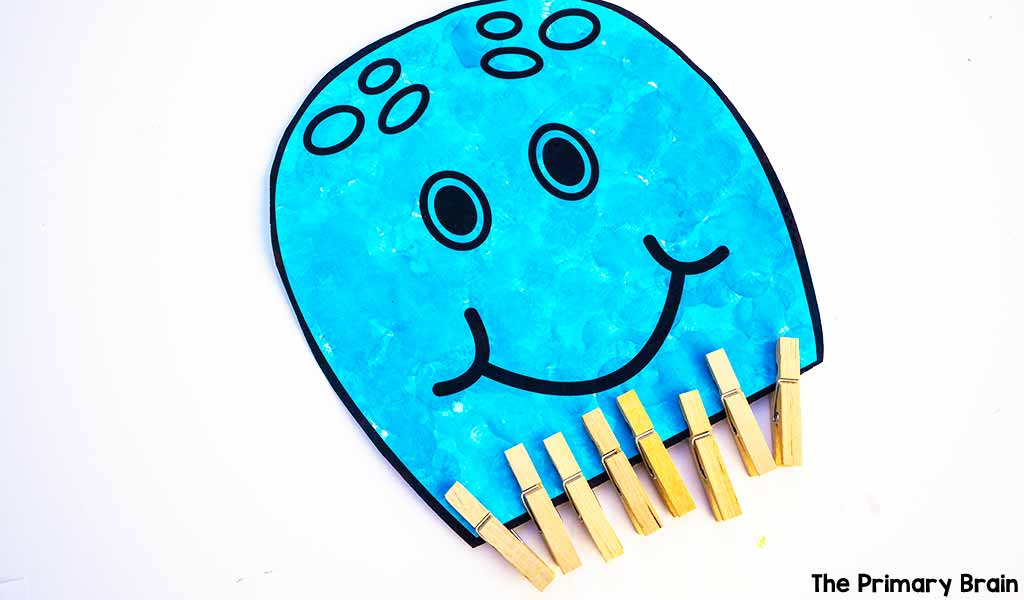
While we learn about octopuses, let’s practice counting to eight since octopuses have eight legs! For this counting activity, your child can decorate an octopus with art supplies. Then, they can add eight octopus “legs” (clothespins) to the bottom of the octopus. As your child counts each clothespin, make sure to have him or her count aloud. Stop after adding three clothespins to count from 1-3 and point to each clothespin as you count. Then, continue counting to number eight! You can also make this more challenging by adding more than eight clothespins!
I hope you found some great octopus ideas to use at home or at school with your little ones! If you want to make teaching your toddler super simple this week, make sure to check out my Octopus Toddler School Unit for 5 complete lesson plans and all the printables you need. These lessons are so versatile that you can even enjoy them with preschoolers and kindergarten studentsI hope you enjoy every minute of playing and learning with your little ones!

This post may contain Amazon affiliate links. I earn a small commission each time someone makes a purchase through one of my affiliate links, which helps to support The Primary Brain blog. As always, I only recommend products that I love and all ideas shared are my own.
Written on January 11th, 2022 by Laurin Brainard
